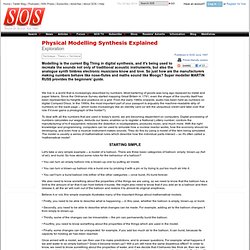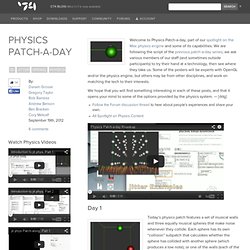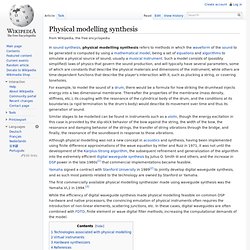

Janet Hsu > Manage Blog. An in-depth look at the evolution of Ace Attorney's sound design Hi everyone!

Janet here! Have you been enjoying Phoenix Wright: Ace Attorney – Dual Destinies? It’s available right now for the Nintendo 3DS, only on the Nintendo eShop! If you haven’t played it yet, or *gasp* just didn’t know, I have a message for you! The only “Objection!” I’m sure some of you have finished the game already, but I hope you’ll stick around for just a little longer because, yes, there is one whole DLC episode waiting in the wings!
Last time, we started talking about the anime cutscenes, and as a natural extension, Mr. Hello, everyone. As many of you may have noticed from way back when you played the demo, the very first sound you hear in the game is the pounding of the judge’s gavel when you selected “New Game”. Anyway, after I came up with the concept behind how the gavel sound should be remade, our team’s Sound Designer Mr. Recording Techniques. Implementation is Design Pt.1. Sound design is a bit like arranging and producing a song.

It could be defined as the process where you get all the micro ingredients to work well together (to quote Tomlinson Holman: “Sound design is the art of getting the right sound in the right place at the right time”). The mix is when you cook the ingredients to fit the context. The line can be a bit blurry. It can get even more blurry with interactive/non-linear mediums. The implementation process for any interactive and reactive medium (games, interactive installations, interactive apps) is one of the most important steps. By trying to answer some of these questions it perhaps might be easier to understand what can be done offline (in the DAW) and what can be done at the implementation stage. We faced some of these questions while creating Meltdown. First and foremost, it was important for us to setup the environment.
Physical Modelling Synthesis Explained. Exploration Technique : Theory + Technical Modelling is the current Big Thing in digital synthesis, and it's being used to recreate the sounds not only of traditional acoustic instruments, but also the analogue synth timbres electronic musicians know and love.

So just how are the manufacturers making numbers behave like nose-flutes and maths sound like Moogs? Super modeller MARTIN RUSS provides the beginners' guide. We live in a world that is increasingly described by numbers. To deal with all the numbers that are used in today's world, we are becoming dependent on computers. Let's take a very simple example -- a model of a balloon. . • You can turn an empty balloon into a blown-up one by putting air inside. • You can turn a blown-up balloon into a burst one by pricking it with a pin or by trying to put too much air into it. • You can't turn a burst balloon into either of the other categories -- once burst, it's burst forever.
Physics Patch-a-day. Welcome to Physics Patch-a-day, part of our spotlight on the Max physics engine and some of its capabilities.

We are following the script of the previous patch-a-day series; we ask various members of our staff (and sometimes outside participants) to try their hand at a technology, then see where they take us. Some of the posters will be experts with OpenGL and/or the physics engine, but others may be from other disciplines, and work on matching the tech to their interests. We hope that you will find something interesting in each of these posts, and that it opens your mind to some of the options provided by the physics system. — [ddg] Day 1 Today’s physics patch features a set of musical walls and three equally musical spheres that make noise whenever they collide.
The interesting twist on this patch is that it contains a set of 3d LFOs controlled using standard ITM objects. Of course, this patch can be modified to do all kinds of other things. Physical Modeling Synthesis for Max Users: A Primer. Physical modelling synthesis. In sound synthesis, physical modelling synthesis refers to methods in which the waveform of the sound to be generated is computed by using a mathematical model, being a set of equations and algorithms to simulate a physical source of sound, usually a musical instrument.

Such a model consists of (possibly simplified) laws of physics that govern the sound production, and will typically have several parameters, some of which are constants that describe the physical materials and dimensions of the instrument, while others are time-dependent functions that describe the player's interaction with it, such as plucking a string, or covering toneholes. For example, to model the sound of a drum, there would be a formula for how striking the drumhead injects energy into a two dimensional membrane. Yamaha signed a contract with Stanford University in 1989[2] to jointly develop digital waveguide synthesis, and as such most patents related to the technology are owned by Stanford or Yamaha.
[edit] Products.